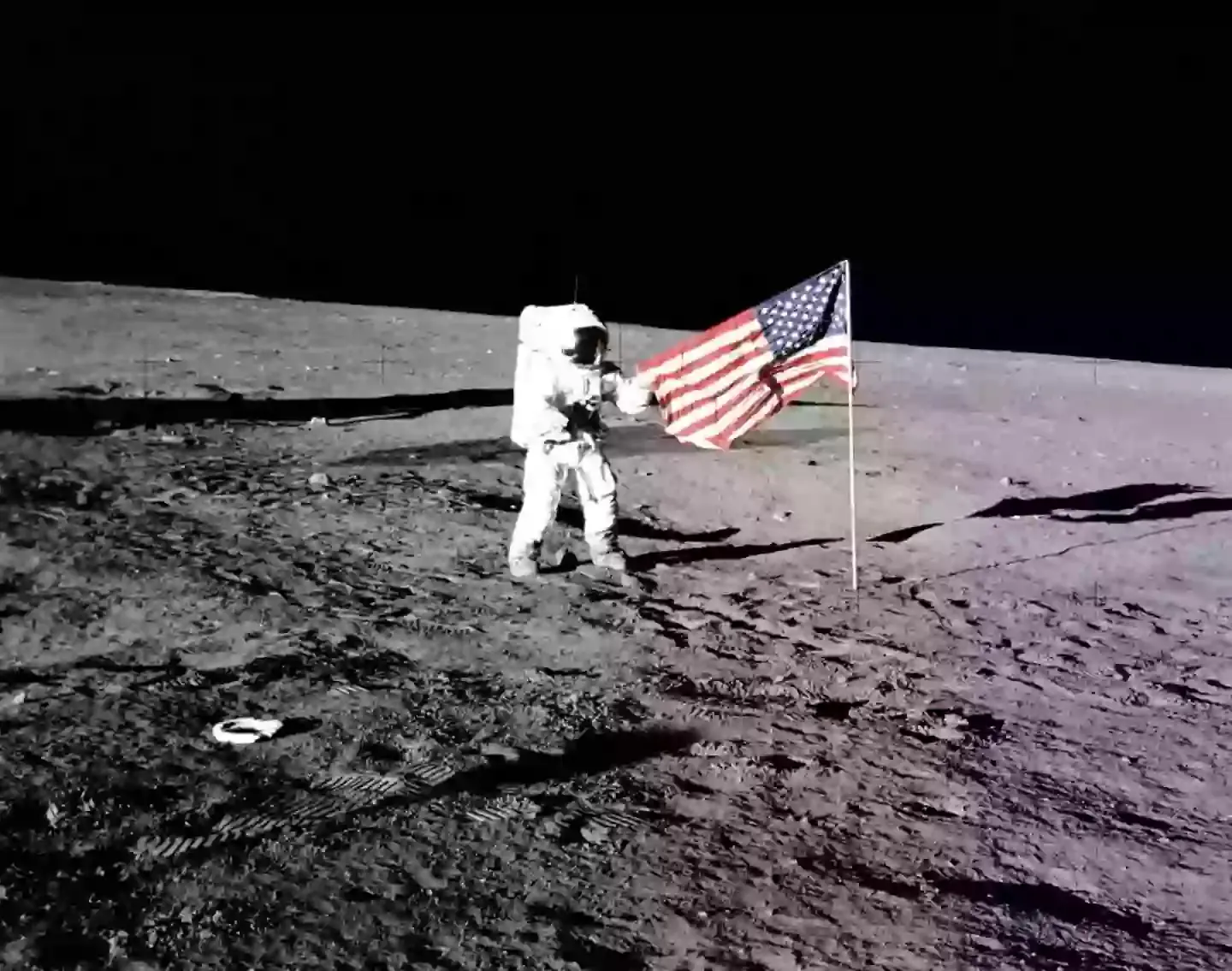
Astronauts Reveal the Dark Truth Behind 50 Years of No Moon Landings — And It’s Seriously Depressing!
It remains one of humanity’s most awe-inspiring accomplishments: on July 20, 1969, Neil Armstrong stepped onto the dusty surface of the Moon, declaring those now-iconic words: “That’s one small step for man, one giant leap for mankind.” That historic Apollo 11 mission, followed by five more successful landings, marked a golden age in space exploration.
Yet here we are, more than half a century later, and no human has returned to the lunar surface since 1972. For generations born after Apollo 17, the Moon is more memory than milestone - an elusive goal that once seemed like a stepping stone to Mars and beyond, but now feels more like a closed chapter.
With advanced technology, reusable rockets, billion-dollar space companies, and frequent missions to the International Space Station (ISS), the natural question is: why haven’t we gone back?
The answer, according to astronauts and top space officials, isn’t a technical one. It’s not because we lack the capability or knowledge. It’s because of something far more human - and far more frustrating.
A Golden Era That Ended Too Soon
Between 1969 and 1972, NASA conducted six crewed lunar landings, collecting over 800 pounds of Moon rock, performing science experiments, and even driving a lunar rover. The Apollo 17 mission, the final one, broke records for the longest Moonwalk and largest samples returned.
But that success was short-lived.
Following the Apollo program, budget constraints, shifting political priorities, and public fatigue brought lunar exploration to a standstill. The focus moved to low Earth orbit, culminating in long-term projects like Skylab, the Space Shuttle, and eventually, the International Space Station.
And while astronauts have lived aboard the ISS continuously since 2000, they haven’t ventured beyond Earth’s orbit in over 50 years.

The Real Reason? Politics, Not Science
Former NASA Administrator Jim Bridenstine, who led the agency during the Trump administration, bluntly explained the true barrier:
“If it wasn't for the political risk, we would be on the moon right now,” Bridenstine told reporters. “In fact, we would probably be on Mars.”
This statement pulls back the curtain on decades of government red tape, budget inconsistencies, and program cancellations.
Why Political Risk Matters
Missions to the Moon or Mars require long-term commitments - in funding, focus, and coordination across presidential administrations. The problem? Every 4 to 8 years, U.S. space policy can shift dramatically depending on who is in office.
One administration may green-light a Moon mission, only for the next to cancel it entirely. This constant resetting of priorities undermines progress, resulting in billions of wasted dollars and years of lost time.
“It’s not the science holding us back. It’s the politics,” echoed a former Apollo engineer during a public Q&A. “The Moon should’ve been our base camp by now.”

Money Talks: The Cost of Returning to the Moon
Space travel is expensive - extraordinarily so. A full lunar mission today could cost between $20–40 billion, depending on the complexity of the mission and the hardware used. That’s a tough sell to Congress, especially when competing with pressing Earth-based issues like healthcare, inflation, and national defense.
Former President Donald Trump attempted to reignite lunar ambitions during his first term, proposing an additional $1.6 billion in funding for NASA to return astronauts to the Moon by 2024.
However, the mission - dubbed Artemis - has already been delayed multiple times. As of 2025, NASA is now targeting 2026 or later for a crewed Moon landing.
Meanwhile, NASA’s overall budget remains a small sliver of U.S. federal spending, hovering around 0.4% - down from 4.5% during the Apollo era.
Bureaucracy: The Invisible Gravity Holding Us Back
It’s not just funding or politics - it’s regulations and bureaucracy that increasingly hinder both government and private-sector missions.
SpaceX, Elon Musk’s private space exploration company, has made extraordinary advances in reusable rocket technology and interplanetary ambitions. Yet, even with Musk’s deep pockets and rapid engineering development, federal regulations are slowing progress.
In October 2023, SpaceX’s Vice President of Build and Flight Reliability, William Gerstenmaier, voiced his frustration:
“It’s a shame when our hardware is ready to fly, and we’re not able to go fly because of regulations or review,” he said in a statement to CNN. “These delays have nothing to do with public safety.”
SpaceX’s plans to return to the Moon, and eventually occupy Mars, rely heavily on the success of their Starship vehicle. But Starship’s test flights have been postponed multiple times due to FAA reviews, environmental assessments, and bureaucratic red tape.
“We have the capability, but we're waiting on permission,” Gerstenmaier lamented.

The Cost of Delay: Innovation on Ice
This bureaucratic gridlock isn’t just frustrating - it’s costly. Every delayed test flight, canceled mission, or shifted goalpost can result in hundreds of millions in losses. But the real cost is scientific and societal.
- Delayed lunar missions mean lost opportunities to study the Moon’s geology, water resources, and radiation exposure.
- It stalls the potential development of Moon bases, which could serve as staging areas for Mars exploration.
- It demotivates new generations of engineers, scientists, and astronauts who dream of "the next big leap."
“Imagine if we’d continued going to the Moon every few years since the '70s,” one aerospace analyst noted. “By now, we’d have lunar cities.”
Private Space vs. Government Space: A Shifting Landscape
While NASA faces political instability and budget cuts, private space companies are rising to fill the void.
SpaceX
With its ambitious Starship program, SpaceX hopes to return humans to the Moon under NASA's Artemis III mission, using Starship as the lunar lander. Elon Musk has publicly stated that Mars colonization is the company’s ultimate goal.
Blue Origin
Founded by Jeff Bezos, Blue Origin is developing the Blue Moon lander and aims to provide commercial lunar transportation.
International Partners
The European Space Agency (ESA), JAXA (Japan), and India’s ISRO are also stepping up their lunar programs. China, notably, has already landed multiple robotic missions on the Moon and plans to land humans there by 2030.
Could Trump’s Influence (and Musk’s Billions) Change the Game?
Donald Trump’s return to political influence - and his well-publicized ties to Elon Musk - has led some analysts to speculate whether a second wave of lunar ambition might be revived with more urgency.
With Musk’s net worth surging by $26 billion following the 2024 U.S. election, there’s hope that private funding may be able to overcome public stagnation.
But even billions in wealth can’t erase the need for international cooperation, safety regulations, and sustained political will.
The Future: A Second Lunar Age?
Despite the setbacks, the dream of returning to the Moon is far from dead. NASA’s Artemis program is now actively training astronauts, constructing spacecraft, and preparing for launches.
Meanwhile, SpaceX’s Starship continues test flights in preparation for lunar landings and, eventually, interplanetary travel.
By the end of this decade, we may once again see humans walk on the Moon - perhaps even set up permanent bases in preparation for the next great leap: Mars.
But until the political, financial, and regulatory gears align, that dream remains a work in progress.
Final Thoughts: The Moon Awaits - But Humanity Hesitates
The saddest truth about our long absence from the Moon is not that we’re incapable - it’s that we’ve chosen delay over determination. Astronauts, engineers, and space scientists continue to push forward, but without consistent political will and investment, progress remains painfully slow.
The Moon hasn’t gone anywhere. It’s still waiting for us. The only real question is: How long will we wait to return?
News in the same category


Earth Plunged Into Darkness For Six Minutes In Rare Event Not Seen In A Century

The Hidden Meaning Behind Leg-crossing — It’s More Than Just Comfort

Scientists Warn: Universe’s ‘Self-Destruct Button’ Could Trigger Without Warning

WORLD'S FIRST DATE SOFT DRINK

We weren’t the only humans just the last ones left to tell the tale

Japanese “Baba Vanga” Meme Resurfaces After July 2025 Tsunami Triggers Alerts

Why you should always put a coin in the freezer before you leave home

Heroic Teen Malaya Grace, 17, Dies After Saving Siblings from Drowning in Texas Floods

Why You Should Never Ever K--ill A House Centipede If You Find One Inside Of Your Home

‘Granny Pods’ Let Aging Parents Stay Close by in Your Backyard

Airport baggage handler issues warning to anyone who ties a ribbon on their suitcase

What Does it Symbolize When a Person Who Passed Away Shows up in Your Dream?

Optical illusion reveals whether you’re an introvert or extrovert

Trapped in Silence: Boy Awakens After 12-Year Coma With Terrifying Secret
Imagine suddenly being trapped inside your own body—fully conscious, aware of your surroundings, but completely unable to move, speak, or communicate in any way. For Martin Pistorius, this unimaginable scenario was reality for more than a decade. His st

Urgent warning issued to all iPhone users following release of iOS 18.6

Experts Warn of Imminent 'Cosmic Hell' That Could Wipe Out Mankind, Exact Time Revealed
Though the ending is billions of years away, the emerging evidence is shifting scientific consensus on cosmic fate. Understanding dark energy—the force shaping expansion—is one of the greatest unsolved mysteries in physics.

Ancient tablet has been completely translated and has some terrifying predictions for humanity

Astronaut Waves And Turns His Camera To Disprove The Flat Earth Theory For Good

Your iPhone’s Volume Buttons Are Loaded with Hidden Features
News Post

After I Saw The Baby My Wife Gave Birth To, I Was Ready To Leave Her — But Then She Said, “There’s Something I Need To Tell You.”

Medicinal Health Benefits of Garlic (Raw, Supplement) – Science Based

Mom Sells Old Stroller to Feed 4 Kids, Finds It on Her Doorstep the Next Day with Note Inside – Story of the Day
A pregnant mother of three needs to sell her stroller to feed her three children after she was abandoned by her husband.

A Father’s Redemption: How One Dad’s Love Gave His Disabled Daughter a Future Beyond Her Dreams
Prom Night Miracle: Devoted Dad Takes Disabled Daughter to Prom—Then Finds a $10K ‘Dad of the Year’ Surprise!

He Wouldn’t Take Off His Hat In Class—But When I Found Out Why, Everything Changed

THEY SAID I COULDN’T KEEP MY JOB AND RAISE HER—SO I TOOK HER ON THE ROAD

A Stranger Yelled At My Daughter In Public—So I Made Sure She Got What She Deserved

My Cousin Got A Job At My Ex’s Restaurant—And Then Sent Me A Photo Of What He Found In The Walk-In

Warning Symptoms of Vitamin B12 Deficiency and How to Fix It

Tingling Sensation In Your Body: Why Does It Happen

High Blood Sugar Warning Signs

Earth Plunged Into Darkness For Six Minutes In Rare Event Not Seen In A Century

The Hidden Meaning Behind Leg-crossing — It’s More Than Just Comfort

Scientists Warn: Universe’s ‘Self-Destruct Button’ Could Trigger Without Warning

WORLD'S FIRST DATE SOFT DRINK

We weren’t the only humans just the last ones left to tell the tale

Japanese “Baba Vanga” Meme Resurfaces After July 2025 Tsunami Triggers Alerts

Top Signs of Iron Deficiency and How To Increase Iron Levels In Your Blood

Doctors Suspected Baby Had Mouth Tumor—The Shocking Truth Left Them Speechless
